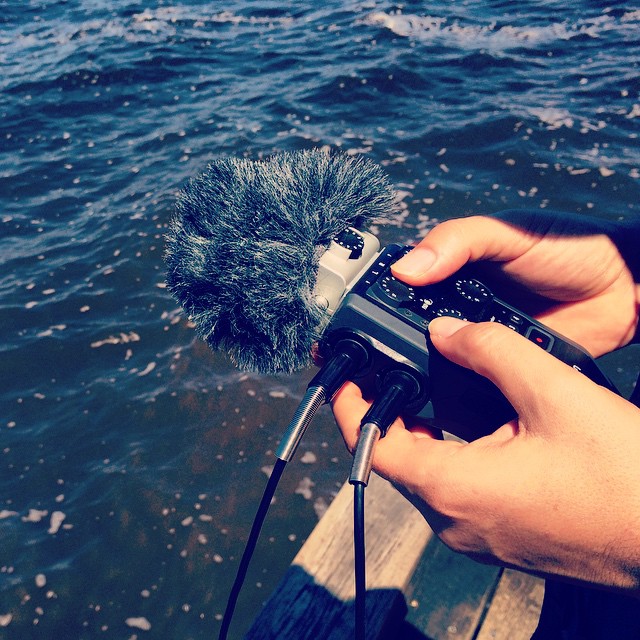In February 2015 a new UNESCO masterclass was delivered as a dynamic blended learning experience for the Asia-Pacific region. Titled “UNESCO Biosphere Reserves as Learning Laboratories for Sustainability”, the program involved immersive masterclasses occurring in Australian Biosphere Reserves accompanied by lectures streamed live online. The program was developed by Leah Barclay in collaboration with UNESCO and provided an opportunity to develop educational tools to bring River Listening into biosphere reserves internationally.
The network of UNESCO biosphere reserves across the Asia-Pacific region offers a unique opportunity for synthesizing experiences and sharing knowledge in response to the ramifications of climate change. This UNESCO masterclass showcased the local and global value of biosphere reserves as learning laboratories for sustainability. It highlighted a series of projects and innovative ideas uniting the conservation of biological and cultural diversity. The initial modules focused on local issues exploring community engagement, partnerships and projects, while the concluding modules focused on global issues across the Asia-Pacific and introduced the opportunities for knowledge sharing, virtual collaborations and the future possibilities of creative technology in responding to climate change.
This masterclass identified a clear need to develop accessible tools that enable biosphere reserves to share their experiences. The Asia-Pacific region could act as a catalyst in inspiring international biosphere reserves to take climate action and one of the most critical tools will be the ability to creatively and collaboratively share advice, ideas and actions from other communities who have had similar experiences. Through this masterclass, the value and future possibilities of UNESCO biosphere reserves was deeply explored to showcase how these sites could have a significant impact in shaping local, national and international climate adaptation responses by engaging communities in interdisciplinary projects.
Underpinning this project is the opportunity to harness the possibilities of mobile technology and community engagement to strengthen the network of UNESCO biosphere reserves. The blended learning experience of this masterclass was developed through a process of research and experimentation to form the most effective tool kit to facilitate accessible education programs. The masterclass proved that embracing the possibilities of this emerging technology will improve cooperation and awareness of the Asia Pacific Biosphere Reserve Network.
The immersive masterclasses in Australia were hosted in Great Sandy Biosphere Reserve in Queensland and Mornington Peninsula and Western Port Biosphere Reserve in Victoria. These sessions included interactive demonstrations on bioacoustics and creative approaches to ecosystem monitoring. The immersive programs were supported by weekly live streams throughout February and March hosted on www.biosherelab.org through Google+ and YouTube’s live streaming platform. The live stream included a realtime Q&A session that leveraged social media platforms such as twitter and encouraged participants to connect online. Biosphere Lab (www.biospherelab.org) was launched as the online platform to host this masterclass and was developed in collaboration with Dr Leah Barclay, UNESCO and CONNECT Asia. The masterclass content was created by Leah Barclay.
Projects featured throughout this masterclass included Floating Land, an interdisciplinary art event in the Noosa Biosphere Reserve, the international Balance-Unbalance initiative exploring the role of creativity in climate change and a wide spectrum of projects taking an innovative and accessible approach to environmental monitoring. These include Rainforest Connections (www.rfcx.org) a project that protects rainforests by transforming recycled cell-phones into autonomous, solar-powered listening devices that can monitor and pinpoint chainsaw activity at great distance, and Biosphere Soundscapes (www.biospheresoundscapes.org), a bioacoustics project exploring the changing soundscapes of UNESCO biosphere reserves through creativity and digital technology. The masterclass also introduced emerging projects such as Racing Extinction (www.racingextinction.com) a global movement involving a team of artists and activists exposing the hidden world of endangered species and the value of connecting people to the sights and sounds of the natural world in order to inspire climate action.
As technology continues to become more accessible there are exceptional opportunities to explore the possibilities and continue connecting communities. This masterclass was an example of exploring what is possible, and it has been successful in engaging people across the Asia-Pacific region and across the world. The participation was focused mainly through Australia, Indonesia, Cambodia, Vietnam and Malaysia, but the live streams also engaged participants from Mexico to New York and New Zealand to Spain. This masterclass was not about traditional education, but exploring new dynamic models that combine global engagement with immersive experiences and leverage new technologies that are rapidly becoming accessible.
This masterclass highlighted the benefits of technology, creativity, culture and community engagement. It proved that communities must feel inspired, connected and supported when responding to natural disasters and environmental changes. The network of Asia-Pacific biosphere reserves opens up the possibilities for connected communities who value culture and think creatively in response to climate change. Biosphere reserves are highly critical sites as we move towards a future of environmental uncertainty. As learning laboratories for sustainability, biosphere reserves present an incredible opportunity to connect communities across the world in responding to the greatest environmental challenges of our time. Communities of biosphere reserves must be aware of their local and global value, engaged in participatory projects and inspired to take action. This masterclass demonstrated that technology, creativity, culture and participatory engagement has the capacity to inspire resilient communities and shape a sustainable future.
